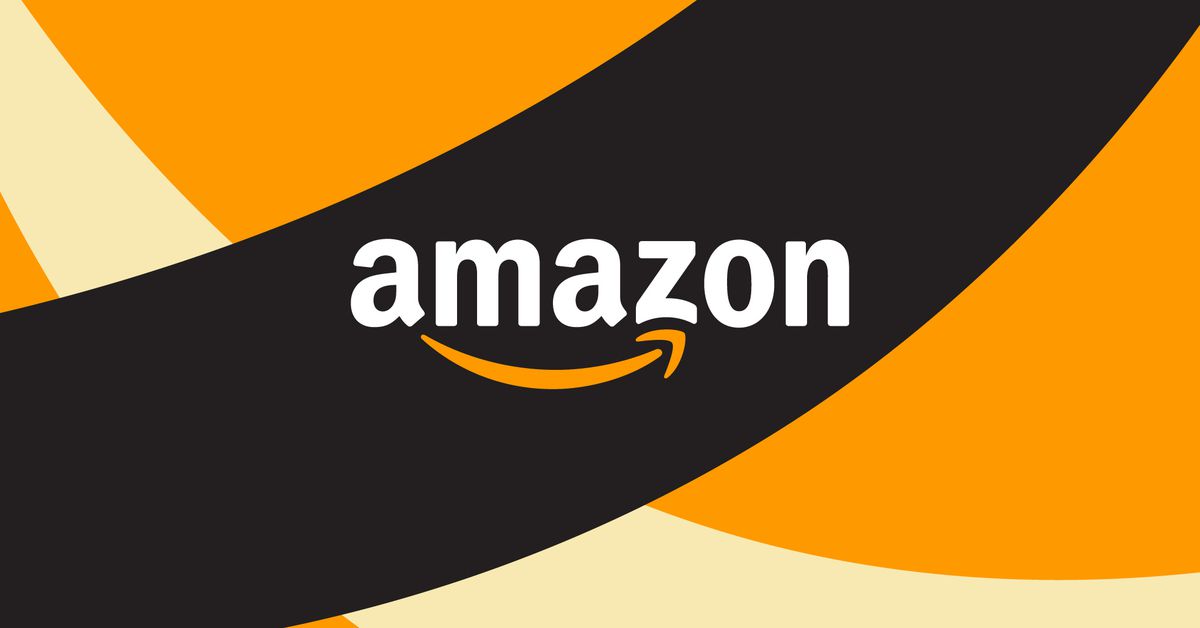Amazon reportedly used a secret algorithm to jack up prices — A new report details Amazon’s Project Nessie pricing algorithm::Amazon deployed a secret algorithm to gauge how high it could raise prices before its competitors stopped increasing their prices as well.
Use Keepa or CamelCamelCamel to see the price history of the item you want to buy.
YSK this data is not entirely accurate. It relies entirely on Amazon’s API, which has been problematic in the past.
Still a useful tool, nonetheless.
That API you are describing is not active anymore. Hasn’t been in a long time.
Keepa has to scrape Amazon data themselves.
in Slovakia there is an aggregator site where stores can publish the stuff they are selling and the price it automatically keeps track.
well the smartwatch I have despite being in Slovakia shut up to 250 euros a month before Black Friday, then magically was many percentages off for 150.
of course the aggregator site showed that it was 150 for the whole year other than that “random” jump before black Friday
edit: found a screenshot, side-by-side with a store that’s not listed on the aggregator:
Not sure if it’s just me but when looking at that in chrome on my phone the picture looks quite blurry and it’s hard to make out much. Doesn’t help that there doesn’t seem to be a way to full screen it.
Load the page on desktop mode then click on the image. imgr is owned by reddit, so it’s been fully enshitified as well.
Thanks. Worked perfectly.
If you are on android you can try the eternity app for lemmy. It works very well.
It’s exactly the same case for me.
Amazon owns camelcamelcamel
Proof?
Ah I am incorrect. I was thinking of woot. Though they did shut down during the pandemic at Amazon’s request
Yeah ever since then CCC has felt sort of unreliable to me. If they’re willing to let Amazon tell them what data they can show once, they’re willing to do it again. Maybe they’re even doing it on an ongoing basis.
A “secret” algorithm. Unlike all those other companies that just publish their proprietary algorithms on the net for anyone to try and game.
My poor eyes are exhausted from all the rolling.
I guess “secret” in the sense that not only the internals of the algorithm, but even the existence of the it is not quite public knowledge.
This is news? I know that gas stations specifically have been doing it forever.
Surely every company makes decisions on how best to increase income, that’s a pretty significant part of being a business.
Right? Amazon’s monopoly is definitely a problem but this part feels pretty par for course. Finding the sweet spot between price/competition/demand is like business fundamentals 101. I can assure you this is something all major retailers consider. There are also many analytics companies with their own “secret” algorithms (this probably just means proprietary?) focused on things things like pricing elasticity and optimization and are targeted to these retailers.
Airlines do this to right? Revenue optimization it is called. But I can imagine that a party with its hooks as widely spread as amazon could automate this and this would be like high volume margin trading of retail.
Iirc there was a guy in an iama last year where the guy tracked prices for plane tickets and found that there wasn’t any “demand-based” pricing.
I’m fairly sure he was debunked though. My memory is a bit hazy and I refuse to return to Reddit to look for it.
while(amazon_price < GetCompetitorPrice()) { amazon_price += 1; Sleep(kOneHour); }; our_price = GetCompetitorPrice() - 1;”SeCrEt AlGoRiThM!!!1” - The Verge
Oh man, you have some serious AI here!
There is still massive price manipulation on amazon which is why I don’t have a prime account for home or anything on “subscribe and save” any more.
“Subscribe and save” is a scam.
They advertise that you will save 5% by using subscribe and save, but then the price of the item you are buying just happens to go up by 30% on the day they decide to use as the basis for your order, which is not the day you ordered it or the day they pulled it off the shelf. It will occasionally go back down to a normal-ish price, but there will also be random months where it goes up 50% or 100%. I’ve seen $15 case of paper towels go up to $45 some months.
Then they keep prodding you to add more items to get 10% off your entire subscribe and save. I added some items a few weeks ago, got the extra discount percentage, but when they priced my order a few weeks later, the cat food I’ve been getting from them at a pretty stable price suddenly went up in price by the exact amount the extra discount was saving me.
Amazon essentially took the “four square” concept that car dealers use to shift higher costs to an area of the transaction where you are less likely to notice it.
The subscribe and save price reflects the listing price at the time your order is fulfilled.
As a seller, the number of subscriptions evaporates if I increase the price on an item.
What you are describing is not a tactic any business is intentionally employing. It’s more likely born of incompetence.
That may be the case, but I have to admit, assuming malice is a lot more fun!
deleted by creator
You should check out CamelCamelCamel or Keepa, it has Amazon price history.
deleted by creator
The 3xCamel works for all these: UK, Germany, France, Italy, Spain, Australia, Canada and US. Sometimes the prices differ for the same products across the EU country versions, so it can be worth comparing them before buying in/from EU.
wow they will make money helping consumerz for now
There is an extention and phone app called Keepa that tracks prices and shows you their price history right on the product page on Amazon so you can see if you are getting a good deal.
This is the best summary I could come up with:
The existence of the algorithm, codenamed Project Nessie, was first revealed late last month in a complaint filed by the Federal Trade Commission accusing the e-commerce giant of violating US antitrust law.
“We once again call on Amazon to move swiftly to remove the redactions and allow the American public to see the full scope of what we allege are their illegal monopolistic practices,” FTC spokesperson Douglas Farrar told the Journal Tuesday.
Project Nessie is just one of many ways the FTC has accused Amazon of illegally maintaining its market dominance in the e-commerce industry.
In the agency’s September complaint, the company is accused of using a variety of methods, like burying listings, to deter sellers from offering products at a lower price on competing platforms.
“The complaint sets forth detailed allegations noting how Amazon is now exploiting its monopoly power to enrich itself while raising prices and degrading service for the tens of millions of American families who shop on its platform and the hundreds of thousands of businesses that rely on Amazon to reach them,” FTC Chair Lina Khan said in a statement last month.
Responding to the suit, Amazon said that the FTC was “wrong on the facts and the law and we look forward to making that case in court.”
The original article contains 322 words, the summary contains 214 words. Saved 34%. I’m a bot and I’m open source!
Well yeah, did you think your landlords were the first to use such algos?
“Ooooh, unexpected”
Cunts
Breaking news! Company tries to find optimal price point.
Target sells cheap, no-name garbage products too?
This is not evidence of a monopoly.
This tactic would only impact Amazon owned listings, which account for a minority of the listings on Amazon.
Amazon does not change prices for listings controlled by third party sellers.
What’s funny to me is that Amazon has a competitive price match policy, where they will hide offers for listings that are priced above other retailers. So the FTC’s argument is that Amazon is trying to drive prices up while also driving prices down.
Isn’t the competitive price match policy a symptom of their monopolistic domination?
Amazon uses its vertically integrated distribution to provide faster shipping. But their marketplace has a higher cut (
5% iircEdit: 15% average). The price match prevents sellers from adjusting Amazon listings to compensate for those fees, forcing the decision to (a) sell at lower margin on Amazon, (b) don’t sell on Amazon, or ©, raise the price across all marketplaces to maintain margin.Rather than holding Amazon prices down, it pulls prices on other marketplaces up. It’s an abuse of the inertia of a large customer base to prevent competition by other marketplaces on the basis of a different blend of cost and delivery service.
In my experience, Amazon takes a lower cut than retail chains. In fact, Amazon is less expensive than DTC when you factor in advertising costs. In all likelihood, it is not causing anyone to drive up their prices off Amazon.
I work with many many brands. I have seen several turn off their DTC channels because customer acquisition costs are simply too high.
The competitive price match policy is a nuisance when retailers liquidate inventory for pennies in the dollar.
I am shocked that business changed prices to meet demand. SHOCKED!
The article doesnt talk about changing prices based on demand, it is about changing prices based on competitors’ prices.
And yea, if Target increased their prices when Amazon increased, then they would just all be higher. Then they could do it another round and another round until one of the companies decided they were at the limit.
If the two companies talked to each other about this, it would be illegal collusion. But instead they have code automate it without an explicit conversation, which may not be illegal but certainly makes our lives worse.
This isn’t an interconnected two way API/algorithm. There is no collusion here. That requires a two way communication and agreement. Amazon is taking public data and automating what every company out there already does.
At best Amazon will get pegged if they are using internal pricing data, but they likely are using publicly available data from the site to avoid that.
Amazon gets sales data, not just pricing data that can be scraped.
Its the extra data they get by controlling the platform/marketplace that becomes problematic imo.
I agree that could be a sticking point, and maybe end up with a minor fine for that. Amazon (and Google+ Ms) typically are very good at separating that data. I’m not sure what Amazon would use that here.
The details are sparse, but that’s not what I read they are doing here.
I have no idea why you are being down voted.
Probably because the pricing changes weren’t driven by demand, but rather by competition.







